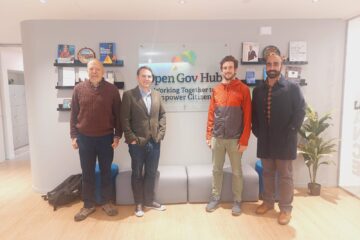This research paper is a part of the MA Social Research Methods Dissertation (UK). It analyzed the struggle of women of Pakistan living in poverty and rise as entrepreneurs to come out of it. I am sharing it with a wider Atlas community that does how women entrepreneurship looks like in Pakistan.
The purpose of this paper is trifold: (i) to analyze the constraints to women entrepreneurship development that causes poverty amongst women in Pakistan, (ii) to analyze the effective role of government-initiated programs towards women entrepreneurship development in Pakistan, and; (iii) to analyze the impact of entrepreneurship on poverty reduction amongst women of Pakistan. In order to do so primary and secondary data was collected through (i) collection of 16 case studies of women entrepreneurs; (iii) in-depth interviews with government official and policy implementers of Pakistan who were directly linked with WBIC (a program which aims to enhance women entrepreneurship in Pakistan) and; (iii) detailed study of WBIC project documents was conducted. The content analysis was utilized to interpret research findings. The results of the study show that women entrepreneurs are exposed to various barriers which include access to capital, access to market, patriarchal ideology, unequal access to resources, etc. However, addressing the barriers faced by women through the WBIC program had a positive effect on women’s entrepreneurship development in Pakistan. Therefore, it can be safely said that entrepreneurship helps women to grow out of poverty.
Key Research Findings:
- From an institutional perspective, it was found evident from the results that cognitive, normative and regulatory issues create environmental barriers to women entrepreneurship development in Pakistan.
- Entrepreneurship positively helped in reducing poverty among women where they have ultimately achieve increased social acceptance, increased decision making through economic contribution, and better health.
- Women of Pakistan face many challenged in the process of becoming an entrepreneur. These include a) access to capital and financial resources, b) access to market, c) education and socio-cultural norms and patriarchal ideology. Their low economic and social empowerment limits their potential to become entrepreneur, consequently leaving them trapped in the vicious circle of poverty
- Regulatory, normative, and cognitive institutions together with socio-cultural and traditional constraints determine the existence and stability of women-owned enterprises in Pakistan.
- Government-funded programs play important role in addressing institutional barriers to women entrepreneurship, however, they do not address the issues of access to credit & issues of patriarchy in the society.
- Government programs positively addressed the institutional challenges including access to market and to some extent providing consultative support and training to women entrepreneurs.
- Evidence based program designing on the oneset of the program would have helped to ensure the better program implementation and outcomes.
- Findings suggest that gender-based programs themselves promote inequality in society. Therefore, government policies should be designed from the perspective of social feminist where women’s role in society is shaped through the process of socialization
For full report you may contact the author at sadia.riaz@atlascorps.org
Thumbnail photo by Christina @ wocintechchat.com on Unsplash



